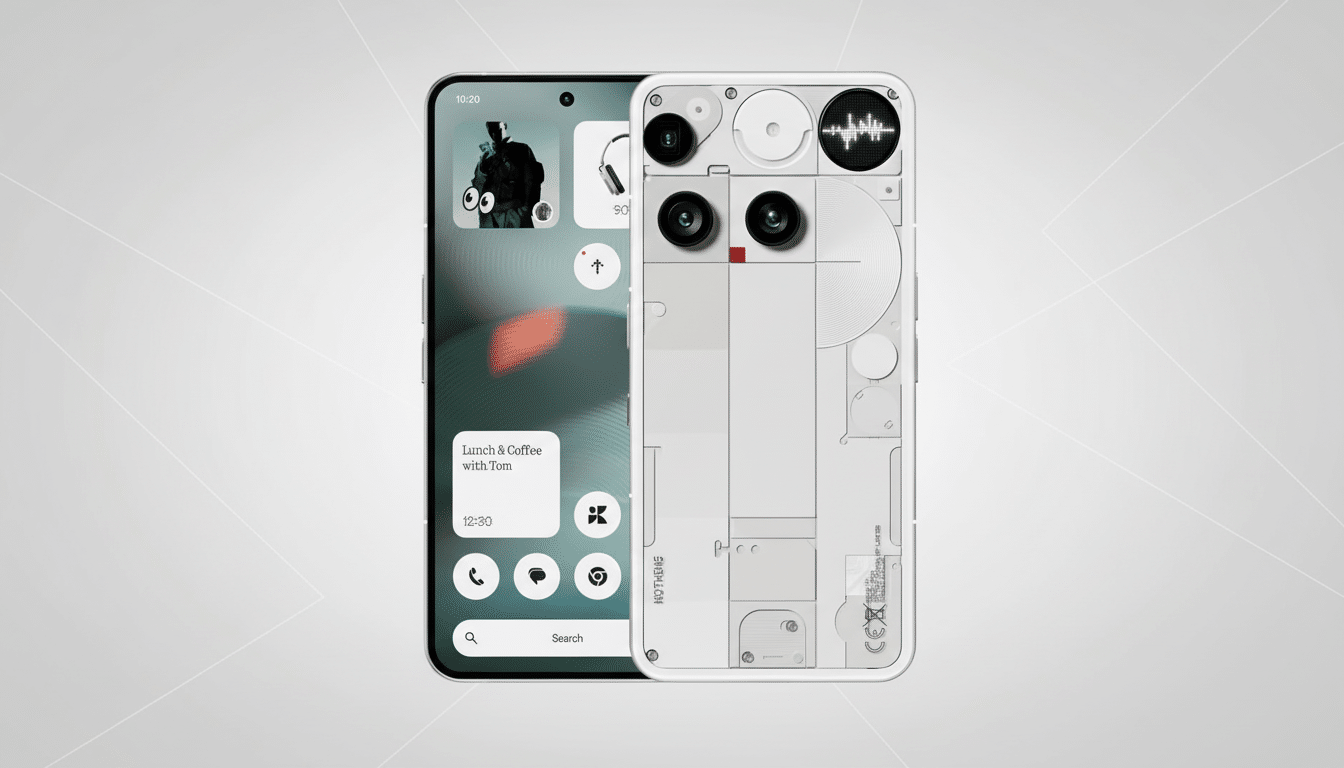Nothing has hit its deadline. The latest software update, Nothing OS 4.0, based on Android 16 for the Nothing Phone 3, is being rolled out by the company to align with its timeline when it released an open beta. For a young brand that’s playing in a market where updates are all too frequently slow, landing a big Android release on time is also an important signal of trust to current owners as well as those who might be considering making the switch.
The first wave focuses on Phone 3, with broader availability coming in the following weeks for the rest of the lineup, a list that currently does not feature 3a Lite — though one is planned to ship afterward. CMF-branded mobile phones are also on schedule before the end of the year. Nothing’s pace of rollout, should that cadence hold, will place it in rare company among non-Google, non-Samsung OEMs.

What’s new in Nothing OS 4.0 on Android 16?
Visually, the update is all about simplicity. Extra Dark Mode makes blacks deeper for OLED panels, minimalist icons take over the launcher, and a tidier status bar cuts down on signal and battery clutter. New lock screen clocks integrate tasteful variety without making the interface too much of a theme park. The refresh is on brand for Nothing: fewer distractions, more legibility.
Functionally, the headline changes reflect where Android is going. AI-powered widgets provide bite-sized, contextually aware info at a glance, designed to reduce your need to jump into full apps. Dual-window multitasking takes split-screen to a new level, helpful for, say, dragging reference notes into messages or comparing scheduling across apps. Early testers on community forums note smoother animation pacing and more reliable frame delivery, in line with Nothing’s promises about faster responses and less UI jitter.
The glyph lights on the Phone 3 also get smarter. The updated third-party app support enables the rear LEDs to act as progress indicators or more granular alerts beyond rudimentary ringtones — say, indicating when a ride-share has arrived or when a delivery order’s status has changed without ever lighting up the screen. For now, it’s a niche feature that will become more interesting as developers plug into it — and with OS 4.0 getting even better API coverage, this is another big step in making Apple’s version of multitasking practical.
Nothing indicates to me that there are Phone 3–specific improvements sprinkled in here and tuned to be hardware-aware. Expect gradual refinements in haptics, camera response time, and touch sensitivity — things that seldom make headlines but which can help phones feel faster in day-to-day use.
Rollout plan and why it’s important for Nothing OS 4.0
Phone 3 tops the list today, with additional Nothing models lined up over the next several weeks and CMF phones to follow by year-end. The 3a Lite is expected to hit the market early next year. That sequence of events closely aligns with how broader Android players roll out updates: debut on the current flagship, then take it downstream to past devices and sub-brands after validation at scale.

Of course, getting a stable release to Android 16 is still important. Google and Samsung, meanwhile, have adjusted the bar by flexing their muscles in both the speed-of-delivery department and the longevity angle: each now promises up to seven years of OS and security updates on its top-tier phones. Research agencies like Counterpoint and IDC say that timely updates lead to better satisfaction rates, as well as retention, especially in the premium and mid-range categories. Support periods are a crapshoot among manufacturers, but cadence and reliability are just as important; making a public statement establishes credibility that spec sheets alone cannot.
To Nothing, a Gen 1 Android 16 update is good for the maturity of its engineering pipeline as well. Android Open Source Project merging, carrier certification, and multiple SKU quality gates can easily send schedules into a tailspin. Delivering it to us on time means a more compact test matrix, a speedier sign-off with our partners — all of which will move the needle for future releases.
Real-world impact for users of Nothing Phone 3
Extra Dark Mode isn’t purely cosmetic, either; those even deeper blacks can help OLED devices draw less power when using system-wide dark theming. At the extreme bottom and top of the UI, those twice-daily microinteractions with a decluttered status bar and updated lock screen clock make just one or two seconds’ difference over a day.
Two-window multitasking is just as useful on modern tall screens that are 16:9 by default, especially with messaging apps, documents, and language learning programs. Matched with fine-tuned animations, the Phone 3 should feel faster under load, and new Glyph integrations will make silent mode more usable in meetings or at the gym.
Nothing also teased the next wave: an update to Essential Space, its save-and-retrieve hub, that brings contextual understanding. The concept is simple but powerful — type a natural query, such as “that article about foldables I saved,” and receive the correct item in return. If done well, it pushes the OS more toward being a benevolent, proactive, memory-like assistant as opposed to just passive storage.
Bottom line: what this Android 16 update means
Nothing promised that it would ship Android 16 for Phone 3 on time, and it did. It overhauls visuals, brings more intelligent widgets, extends Glyph support, and improves multitasking — all in a package that doesn’t feel like the feature equivalent of Tetris. With a clear vision of how updates will roll out to other models and CMF devices, Nothing sees a common Android pain point as being just another competitive talking point. For Phone 3 owners, the update is a no-brainer; for everyone else, it’s proof that Nothing’s software promise is more than just words on paper.

